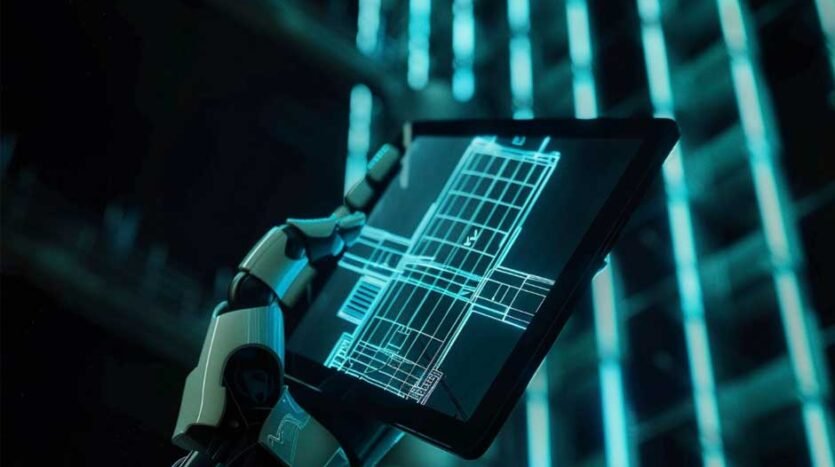The Future of Construction: How Math and AI Drive Automation in Building Projects
Construction—once all concrete dust and blueprints—is quietly transforming. A shift is happening under the scaffolding. Machines hum differently now; their rhythm is guided not by hands but by algorithms. The future of construction is digital, mathematical, and intelligent. Gone are the days when rough sketches ruled the site. Now, the hum of servers competes with the whirr of cranes.
According to McKinsey, automation and AI could increase construction productivity by up to 60% in the next decade. That’s not fantasy—it’s happening now. Robots lay bricks, drones measure distances, and artificial intelligence predicts supply delays. It’s a massive evolution, one built from equations, logic, and a touch of learning code.
The Silent Language: Mathematics in Modern Construction
Let’s start with the foundation—mathematics. Behind every beam, bridge, or skyscraper stands a network of calculations invisible to the naked eye. Geometry shapes design, algebra determines load, and statistics predict safety margins. In a world of automation, math doesn’t retire—it multiplies.
Mathematical modeling helps predict how materials behave before a single bolt is turned. For example, engineers use finite element analysis (FEA) to test structures virtually. Instead of building multiple prototypes, they feed formulas into simulations. The results? Fewer errors, less waste, more precision.
The link between math and AI is becoming inseparable. AI learns patterns, and math defines them. Every algorithm running a robotic excavator or automated crane relies on numerical logic. Without mathematics, artificial intelligence would simply guess—and in construction, guessing is expensive.
When Machines Learn to Build
So, how does AI drive automation in building projects? The process begins with data—massive amounts of it. Blueprints, weather patterns, soil measurements, even worker schedules feed into AI systems. From there, automation takes the wheel.
AI-powered robots can lay bricks three times faster than humans. Drones can map an entire construction site in under an hour, producing 3D visualizations accurate to within centimeters. Machine learning models forecast delays before they occur, suggesting alternative resource allocations.
For instance, a company in Japan tested AI-driven cranes capable of optimizing their own lifting sequences. The result: efficiency improved by 35%, and energy use dropped. The AI system analyzed wind speed, load weight, and crew positioning—factors a human foreman would handle manually. Now, machines calculate in seconds what used to take hours.
And that’s the quiet revolution. No grand speeches, no headlines—just data, decisions, and design blending seamlessly.
The Math Solver Extension: A Small Tool with Big Impact
Amid all this, there’s a subtle player: the math solver extension. Not a robot, not a full AI system, but a small digital assistant used daily by architects, students, and project engineers. Yes, the math AI extension can solve equations instantly, yes, but it does more than visualize solutions, check formulas for structural analysis, and support learning across the industry. The math solver’s advantage is that it provides step-by-step solutions. This means the math AI solver clearly demonstrates where the result can be improved and guarantees the accuracy of the answer. A civil engineer working on a slope stability problem can input complex expressions and receive not only the result but also step-by-step reasoning.
Designing Tomorrow: AI and Predictive Construction
Imagine this: a construction site that manages itself. Materials arrive precisely when needed. Robots adjust for unexpected weather. Sensors embedded in walls alert AI systems of pressure changes. That’s not far away—it’s the future of construction already unfolding.
AI-driven predictive models can estimate the lifespan of structures by analyzing environmental stress, humidity, and temperature changes. This means fewer surprises decades later. Predictive maintenance saves millions by preventing early deterioration.
Moreover, automation extends to safety. Cameras combined with AI can detect unsafe movements or identify workers not wearing helmets. In real time, alerts go out, incidents decrease, and lives are protected. The balance between human intuition and artificial analysis grows tighter each year.
Numbers Don’t Lie: The Data Revolution
The math behind this transformation isn’t ornamental—it’s operational. Global spending on AI in construction is expected to exceed $10 billion by 2030, according to Allied Market Research. The sector is becoming data-first, shifting from intuition to quantifiable precision.
Consider scheduling. Traditional project timelines often overestimate by 20%. AI systems using mathematical optimization can reduce that margin to less than 5%. Budget forecasting, once filled with guesswork, now runs on predictive analytics based on thousands of comparable projects.
Mathematics structures this data flow. Probabilities define risk, regression models reveal cost curves, and algorithms adjust material usage dynamically. It’s not the architect who redraws the line now—it’s the model.
Humans Still Build—But Differently
Of course, automation doesn’t erase people. It redefines them. Workers aren’t replaced; they’re repositioned. The role shifts from manual repetition to digital supervision. A builder now may monitor robotic arms or interpret AI feedback rather than swing a hammer.
Education changes, too. Construction training includes coding, data science, and applied math. In short: you can’t operate tomorrow’s construction site without understanding the math that powers it. The human presence remains essential—not to do the heavy lifting but to ensure the algorithms lift correctly.
Beyond the Blueprint
The story of the future of construction is not simply one of technology. It’s about a mindset. It’s about merging calculation with creativity, precision with possibility. The harmony between math and AI doesn’t just drive automation—it rebuilds how we think about building.
Each structure of tomorrow—whether a home, a bridge, or a city skyline—will carry invisible imprints of algorithms and equations. Math will remain the skeleton; AI, the muscle. And together, they’ll build faster, cleaner, safer.
The blueprint of the future is already drawn. Not with ink, but with code. And in that silent matrix of numbers and logic lies the next chapter of human construction.


